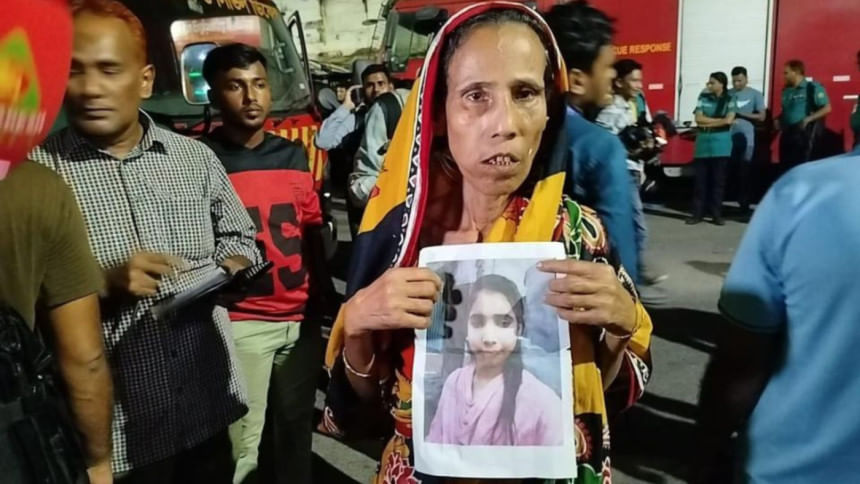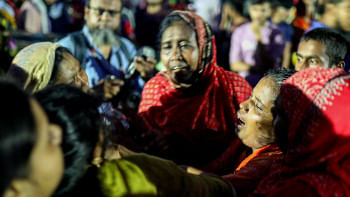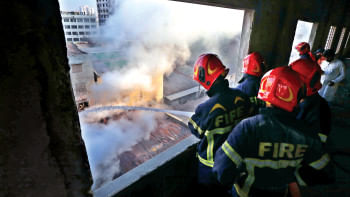Algorithm of apathy: 16 deaths that didn’t trend

People love to say "media never covers the real stuff." It's an overused gripe on Facebook, an easy chorus to join because it validates public cynicism. But as a garment factory and a chemical warehouse in Dhaka's Mirpur burned on October 14, the media did its duty -- relentlessly.
Reporters filed updates round the clock: confirmation of 16 deaths, names and faces burnt beyond recognition, the air still toxic, grieving families searching outside the factory and later at Dhaka Medical College morgue for mortal remains of loved ones.
Scroll through the feeds of your friends and those in your social circle. Where was the conversation? Where were the furious posts? Did our collective timeline suddenly turn quiet. Why?
Here is a theory: class empathy has a ceiling. When the dead are poor workers -- teenagers, newlyweds, sole earners of their families who don't post brunch photos from the newest Banani restaurant -- educated middle-class and affluent outrage short-circuits.
Another theory: the algorithm rewards spectacle and proximity. Sixteen is a devastating number -- sixteen human lives -- but it doesn't trip the virality threshold in a landscape trained on major catastrophes or celebrity-adjacent drama. So, we self-select out, and the feed obliges, burying the story under political highlights and reels about some influencer's outlandish claim about even more outlandish clothes.
A day after the devastating fire, those working in nearby factories in Mirpur were warned to stay away because inhaling the fumes could make you seriously ill. Yet many showed up anyway. Not out of defiance; they came hoping to earn a day's wage, to keep food on the table.
There's also the theory of "fatigue". Or what we call fatigue when we mean apathy. "Everything is bad, what can we do?" The answer always has been: look, listen, demand better. Media did all three in this case. Reporters kept showing up while the smoke still rose. They chased whether the chemical storage was unauthorised, whether doors were locked, whether anyone will be held accountable beyond the ritual formation of "a probe committee." They also published the mourning -- slow, careful pieces asking the most basic question: how many more workers must die before impunity ends?
So why didn't netizens? Is it because the story indicts our bargains? The inexpensive clothes we love so much, the silence we accept when a building allows chemicals because rent is rent. Outrage at worker deaths compels us to ask who benefits from the shortcuts. We know the answer, and it makes us uncomfortable.
You can criticise the media and still admit it did its job here. Major outlets corroborated the death toll, mapped the timeline, documented the hazards persisting long after the flames were out. If you're going to rail at coverage, at least rail accurately -- at the factory owners who hide, at the regulators who nap. Save some rage for the algorithm, sure. But save the most for educated middle-class and affluent indifference.

 For all latest news, follow The Daily Star's Google News channel.
For all latest news, follow The Daily Star's Google News channel. 







Comments